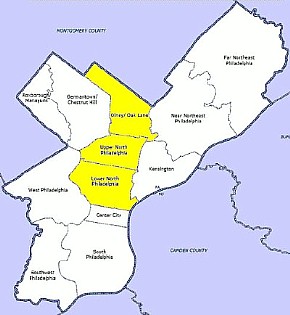2000.02.15 12:39
metabolic (modern revolution)
The [Hegelian] notion of "thesis + antithesis = synthesis" reenacts almost exactly the physiological operation of metabolism (i.e., the sum of the processes concerned in the building up of protoplasm and its destruction coincidental to life : the chemical changes in living cells by which energy is provided for the vital processes and activities and new material is assimilated to repair the waste--see ANABOLISM and CATABOLISM). Metabolism is a creative / destructive duality, perhaps even the foremost and profoundest duality of humanity. Anabolism is constructive metabolism, whereas catabolism is destructive metabolism (involving release of energy and resulting in true excretion products although new substances may be formed in metabolic processes that are mainly catabolic).
Because metabolism is of a higher reality than revolution, perhaps the 'Hegalian' notion of revolution and the subsequent interpretation that ultimately synthesis equals an ongoing parade of antithesis destroying a prori antithesis are not precise enough. The real equation seems to be that thesis + antithesis = antithesis + thesis = thesis + antithesis = (continuation of the pattern) -- wave[length]s. In metabolism, anabolism and catabolism work in conjunction as opposed to destroying each other or one destroying the other, and the real key (to understanding) here is that albeit destructive, catabolism 'creates' the energy that further enables the creative/destructive process.
Is revolution nothing more than humanity's reenactment in imagination and deed of one of the human body's basic physiologies?
Is Modernism a revolution, or is Modernism a realization of how humanity's (modern) creations operate?
| |
2002.02.15 14:12
Re: Ken's paper architecture
I don't know the origin of the term "paper architecture", but I would say that the reality of what is today generally considered "paper architecture" goes back at least a couple centuries now. Boullée's work quickly comes to mind.
I hope I'm not presuming too much here, but I consider "paper architecture" (again in the most general terms) as such architecture that is drawn (on paper) but is not executed, likely never to be executed, and often of a design that is so bombastic that non-execution is almost guaranteed.
With Quondam's collection, which is largely CAD models of unexecuted architecture designs, the notion of "paper" is a non-issue. But, as is occasionally evident, the lack of paper at Quondam does not necessarily eliminate bombast.
050215a Barnes Foundation site (Romaphilia) plus upgrade of Parkway paving
2350i11
b
050215b Acropolis Q plan all on one layer; aligned with Barnes site on Parkway
2350i12
050215c Acropolis Q plan cropped and adjusted to fit within the Barnes Foundation site
2267i04
050215d Rodin Museum model (Romaphilia) plus Youth Study Center massing
2350i13
050215e Acropolis Q model (so far) in register with Romaphilia
2266i07
050215f House in Laguna 001 in register with Romaphilia
2350i14
b
050215g House in Laguna 002 in register with Romaphilia
2322i05
b
050215h Mayor's House in register with Romaphilia
2269i05
050215i Wacko House 002 in register with Romaphilia
2350i15
b
| |
2006.02.15 10:32
non-event cities
You presented what I would call a honest history of CAC. And, going back to the King quotation at the top of the thread, you based the architecture on "structure" rather than "sensation".
It looks like King too is guilty of utilizing "buzz" in some instances. Perhaps journalism today just can't escape it, and that's why I see most media coverage of architecture as masked advertising. And before I'm misinterpreted here, I am not against advertising itself, rather I'm against not recognizing that most media coverage of architecture is advertising.
Also, so that my post about going to the Italian Market (in 1960) is not misinterpreted, the point there is that my parents were already doing "cool" urban things and going to "cool" urban places and unwittingly taking me on architectural tours all over Philadelphia. To them it was all just living in the city, and pretty much that's still all it is to me too. Just going to different places is eventful, and, ironically, media hype or buzz makes things less interesting to me.
| |
2006.02.15 17:54
non-event cities
This is partially just semantics, but North Philadelphia, which I assume is where the vacant land that you recently saw pictures of is, is not what anyone here calls "suburban" or even "inner suburban"--North Philadelphia in local lingo is "inner city," but not to be confused with "Center City." To call a place here suburban you have to be literally outside the city limits. Philadelphia is a large place and comprises dozens and dozens of neighborhoods.
All of North Philadelphia in yellow.

I would guess that most tourists of Philadelphia only visit Center City.
| |
07021501 Acropolis Q model with Haus der Kunst
3392mi01
2266i11
11021501 Eclectic Houses elevation scans
223ai01
13021501 Governor's Palace model in register
2177i22
15021501 Bldg 9594d @ GAUA 1100x550
2429i59
15021502 Bldg 9594e @ GAUA 1100x550
2429i60
15021503 Bldg 9594f @ GAUA 1100x550
2429i61
15021504 Bldg 9594g @ GAUA 1100x550
2429i62
15021505 Bldg 9594h @ GAUA 1100x550
2429i63
15021506 Bldg 9594i @ GAUA 1100x550
2429i64
15021507 Gooding House Altes Museum plans elevations
2120i43
15021508 Altes Museum base extended site plan Ottopia/NNTC
2120i44
17021501 IQ49 Institute of Contemporary Art Acropolis Q Museum Annex Analogous Building Cut & Paste Museum Circle Squared Museum Cubist ICM plans site plans in progress
224ai10
18021501 OMA New Courthouse Lille
19021501 Philadelphia IQ16 plan model
2093i91
|